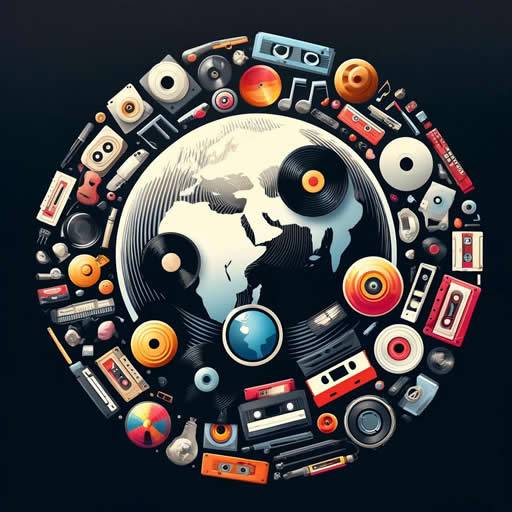The Cultural Significance of Antique Musical Instruments in Music History
Key Takeaways
– Antique musical instruments have deeply influenced the evolution of music, contributing to the development of unique genres and styles.
– These instruments provide valuable insights into the craftsmanship and cultural contexts of past societies, emphasizing their enduring impact on modern music.
Introduction
Since time immemorial, music has served as a poignant expression of cultural identity and artistic endeavor. Central to this rich tapestry are musical instruments, particularly antique ones that have shaped and defined genres and styles throughout music history. It is crucial to understand the profound influence of these vintage instruments as they bear witness to the intricate interplay between cultural heritage and musical evolution.
The Influence of Ancient Instruments on Modern Music
Antique musical instruments transcend mere historical artifacts by continuing to influence modern music. Instruments such as the lyre, harp, and lute have not only informed the development of contemporary instruments like the guitar and piano but have also inspired the compositions we cherish today. This influence, in turn, has fostered a deeper appreciation for the craftsmanship and cultural significance underlying these ancient tools.
In the realm of classical music, the violin exemplifies the enduring legacy of design principles rooted in Stradivari and other renowned luthiers. These makers from the Renaissance era perfected the art of crafting instruments with exceptional tonal quality and aesthetic appeal, which remain benchmarks for modern violins. Furthermore, wind instruments, exemplified by Renaissance recorders, laid the groundwork for contemporary flutes and clarinets, enriching the orchestral and chamber music landscapes.
The continuous resurgence of interest in antique musical instruments, both within and beyond the realm of collectors, underscores the vital role these historic pieces play in shaping the fabric of music across the ages. Their timeless allure and influential imprints resonate with musicians and historians alike, emphasizing a shared cultural heritage.
Related
– Delve deeper into the historical context and cultural value of these instruments in our comprehensive exploration of antique musical instruments.
The Role of Vintage Instruments in Shaping Genres
Antique instruments have been seminal in the formation of numerous music styles and genres, providing a bridge between historical practices and contemporary innovations. Their role extends beyond mere musical production; they embody a cultural and artistic legacy that continues to inform genre evolution through time.
String Instruments: The Continua of Tradition
String instruments, historically prominent in both folk and classical music, have significantly impacted genre development. The lute paved the way for the guitar, as its intricate fingerstyle techniques were preserved and adapted through generations. Early guitar-like instruments were staple components of the baroque music tradition, eventually becoming key elements in contemporary genres, such as flamenco and jazz.
Related
– For more on how medieval music techniques influenced modern genres, visit our article on the influence of medieval music.
Wind Instruments: Evolving Sounds and Styles
Wind instruments also transitioned through various cultural shifts, with early forms like the shawm evolving into more refined counterparts, such as the modern oboe. This evolution prompted the development of genres like classical and jazz, where these instruments play a pivotal role. Similarly, the harmonica, rooted in earlier free-reed designs, found its place within blues, country, and rock music, testifying to its adaptability across genres.
Percussion Instruments: Rhythmic Foundations
Percussion instruments provide the anchor for many music genres by setting the rhythm and tempo. Antique percussion instruments contributed to the rhythmic complexity we observe in modern music. Instruments like the darbuka and djembe have informed and enriched global music styles, from African tribal music to contemporary techno beats, demonstrating their enduring influence.
The Evolution of Instrument-Making Techniques
The evolution of musical instruments is intrinsically linked to advancements in instrument-making sophistication, which reflects broader technical and cultural shifts. This evolution is marked by a continuous balancing act between tradition and innovation, influencing both the aesthetic and functional aspects of music.
Craftsmanship and Innovation: A Historical Perspective
The traditional craftsmanship of musical instruments is a testament to the ingenuity and artistic flair of past societies. Builders continually refined designs to enhance sound quality and playability. The development of brass instruments, for instance, illustrates an ongoing quest for tonal richness and precision, evident since their inception in ancient civilizations.
Contemporary techniques in instrument-making incorporate technologies like computer-aided design (CAD) and synthetic materials, broadening the horizon for musical exploration while preserving the essence of classical craftsmanship. The result is a harmonious blend of old-world charm and modern innovation, ensuring that antique musical instruments continue to resonate in present-day contexts.
Related
– Experience the journey of the electric guitar’s evolution in our article detailing the history of electric guitars.
Sustaining Cultural Traditions Through Craft
Instrument makers are not merely artisans; they are custodians of cultural traditions, striving to maintain the integrity and heritage encapsulated in every piece they create. This responsibility necessitates a deep understanding of historical context, as every tool, material, and design choice reflects the societal values and technological capabilities of its time.
The role of makers is crucial in revitalizing declining musical traditions. By skillfully replicating antique designs, they facilitate a resurgence of interest in historical music forms, thus perpetuating a vibrant cultural legacy.
Conclusion
In sum, the cultural significance of antique musical instruments extends far beyond their aesthetic appeal. As artifacts that have sculpted the contours of music history, they continue to inspire and inform the musical landscape today. Through their enduring impact on instrument-making techniques and genre formation, vintage instruments remain valuable to musicians, historians, and collectors alike. They stand as eloquent reminders of our shared artistic heritage, worthy of preservation and exploration for future generations.
Editor’s Picks
– Discover the rewarding world of collecting and the various antique instruments you can explore in our guide to antique musical instruments.
– Explore the cultural significance and valuation of music memorabilia in our informative piece on music memorabilia.
– For insights into the appeal and hobby of sheet music collecting, check out our article on the art of sheet music collecting.
